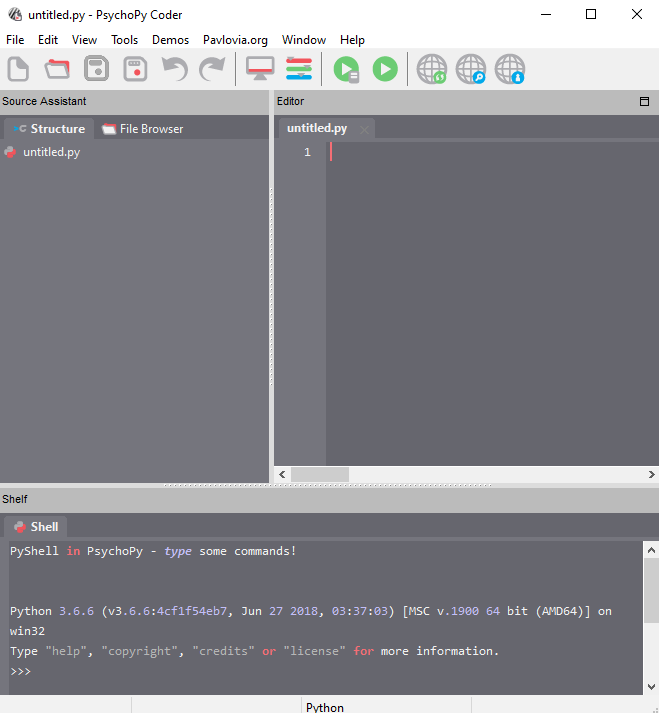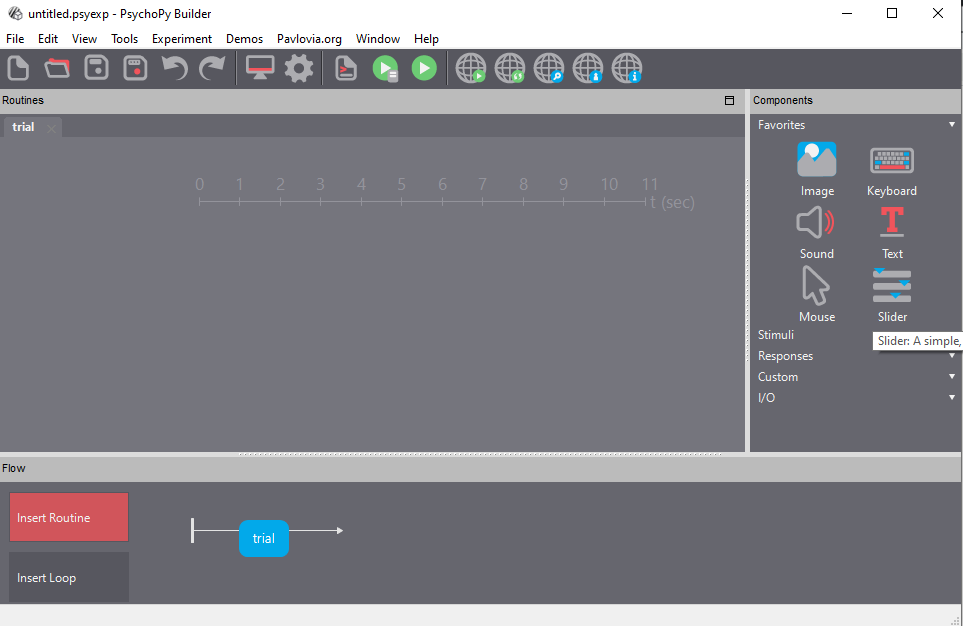Rebecca Hirst - Science Officer/Consultant and postdoc (research focus multisensory perception)
Jon Peirce, Todd Parsons, Matthew Cuttone, Sol Simpson
Alain Pitiot, Thomas Pronk Sotiri Bakagiannis
many other people have contributed to the PsychoPy project (Jeremy Gray, Mike MacAskill, Richard Höchenberger, Sol Simpson being the biggest contributors)
Nottingham University have been paying Jons salary while PsychoPy was written
Wellcome Trust recently gave us a grant to improve this a LOT
Not aiming to teach you all of PsychoPy
Hopefully give you some ideas about what’s possible
It’s Psychology software in Python
a library for use in Python scripts
an editor including Python to edit scripts
an application with a graphical user interface (GUI) for building experiments
It’s, itself, entirely written in Python
The aim is to enable scientists to run as wide a range of experiments as possible, as easily as possible, with standard computer hardware.
precise enough for psychophysics
intuitive enough for undergraduate psychology
flexible enough for everything else
capable of running studies in the lab or online
It’s hard to make something easy enough for undergrads and novices but flexible enough for everything else.
PsychoPy provides two main options, for programmers and non-programmers, but there are also ways to combine the two.
PsychoPy is written in the Python programming language

The Coder view is used to create experiments from Python scripts¶

The Builder view is used to create experiments visually¶
To implement more complex experimental designs/procedures(?)
To break out of the current trial structure or hardware drawing loop cycle
To know exactly what the code is doing(?)
To program things that aren’t psychology experiments. (e.g. stats, simulations, analyses etc.)
It is far faster to develop experiments!
You can still understand (and build on) your experiment next year
You’ll probably have fewer bugs
Code Components can be used in nearly all places where Builder isn’t enough
Your Builder experiment will also compile to a web (JS/HTML) experiment!
I (Becca) and Jon still use both Builder and Coder on a regular basis.
My experiments I are almost always in Builder, with added Code Components. I don’t ever break out and switch to pure code. I use code for other things (e.g. making my ‘conditions’ .csv files, making stimuli)
Building Experiments in PsychoPy by Peirce and MacAskill (2018, Sage Publications)
Programming Visual Illusions for Everyone by Marco Bertamimi (2017, Springer)
Python for Experimental Psychologists by Edwin Dalmaijer (2017, Routledge)
So, let’s go on and learn some Building better experiments…